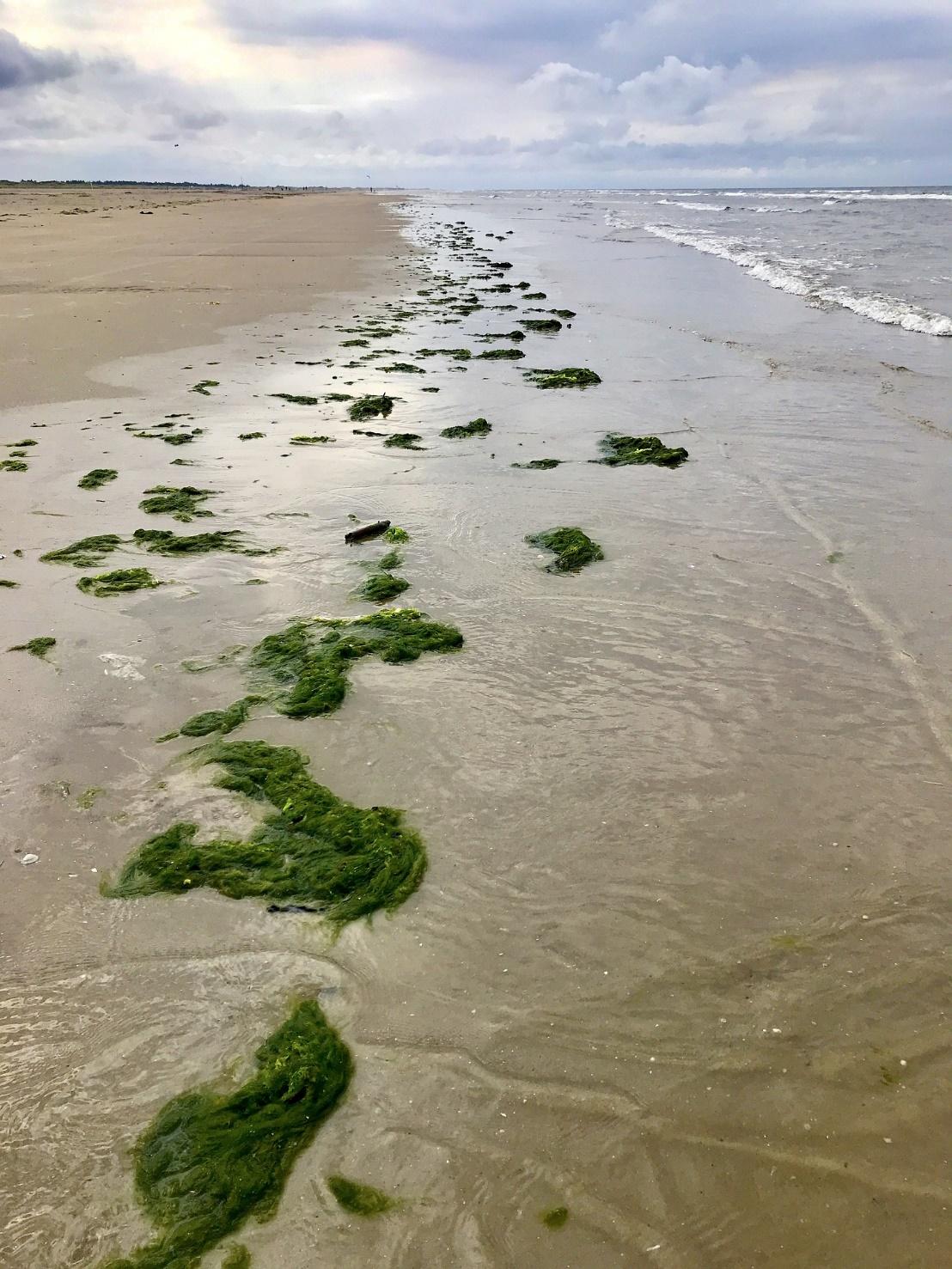Seaweed Could be Used for Jet Fuel, Battery Materials
Warming oceans are causing massive seaweed blooms to foul beaches—researchers are finding ways to turn it into aviation fuel and graphite for batteries.
As oceans warm due to climate change, blooms of aquatic plants such as algae become problematic. The amount of seaweed in the Caribbean in 2022 exceeded the previous record set in 2018 by 20 percent. It was clearly evident, covering the usually pristine sandy beaches from the coast of Florida to Puerto Rico, turning away tourists as piles of stinking organic material lay rotting on the seashore. Eventually, the decaying mass also releases methane, a harmful greenhouse gas (GHG) that increases global warming.
Seaweed is strewn along a beach. Image used courtesy of Pixabay
Warm oceans not only increase seaweed records, but also are shown to increase the intensity of hurricanes. When Puerto Rico was hit five years ago by Hurricane Maria, it devastated the island. Even now, the U.S. commonwealth is dealing with piles of wood waste left over from the destruction of houses and businesses. The country’s landfills are all beyond capacity, and there is no place to put the rotting wood—it’s a problem faced by many other hurricane-ravaged islands in the Caribbean.
Aviation Fuels and Battery Parts
With the seaweed and rotting wood problems unlikely to get any better on their own, scientists at the National Renewable Energy Laboratory (NREL) had an idea. They could develop processes to turn the organic matter into sustainable aviation fuel (SAF) and graphite that could be used to make the anodes for electric vehicle (EV) batteries.
A team was put together, combining researchers from NREL, North Carolina State University, the University of Puerto Rico, and the Fearless Fund. It was funded by $2 million from the U.S. Department of Energy (DOE) Bioenergy Technologies Office.
Illustration shows the process of converting woody waste and sargassum into sustainable aviation fuel. Image used courtesy of NREL
The team determined that by combining seaweed and wood chips, a feedstock could be created for microbes that would digest the simple sugars from the mix into molecules that could serve as precursors to biofuels. Dilute acids are used to pre-treat the mixture to make the sugars more available to the microbes that convert pulp into a liquid that can then be fermented into ethanol.
The technologies to turn ethanol into SAF that is chemically identical to traditional jet fuel already exist, and the bio-derived version has been shown to reduce GHG emissions by up to 90 percent compared with fossil-derived aviation fuels.
High Hopes for Graphite in Batteries
The process also results in leftover solids, but the team found a use for them too. Carbon graphite composes up to 30 percent of a lithium-ion battery of the type that powers cell phones, laptop computers, and EVs. Nearly 70 percent of the graphite used in lithium-ion batteries comes from China, and there is a push worldwide to find other, less expensive, and politically sensitive sources.
It turns out that the leftover solids can be "graphitized" using high heat and in the presence of an iron catalyst, causing carbon in the solids to link together into a graphite crystalline structure. While, thus far, the graphite produced in this manner hasn’t quite achieved the necessary properties to allow it to be used in a battery, they are hopeful that further research will achieve the desired result. It remains one of the team’s top priorities.
Advantages of Converting Seaweed, Wood Into Aviation Fuel, Battery Materials
The team estimates that up to 1.24 million tons of sargassum seaweed could be harvested yearly. If blended with 75 percent wood waste chips, the process could yield as much as 78 million gallons of SAF for the aviation industry each year.
On the battery side, if the graphitization process can be improved, it could result in 61,000 tons of battery-grade graphite annually—close to 3.4 percent of the current global synthetic graphite annual production.
Beyond the potential commercial advantages of turning seaweed and wood chips into aviation fuel and battery materials are the obvious cleanup of coastal communities and tourist beaches. Finding a way to remove both the health and climate threats from rotting seaweed and piles of decaying wood in such a novel way demonstrates the kind of innovative thinking that will be needed if the climate change challenges are to be met.








